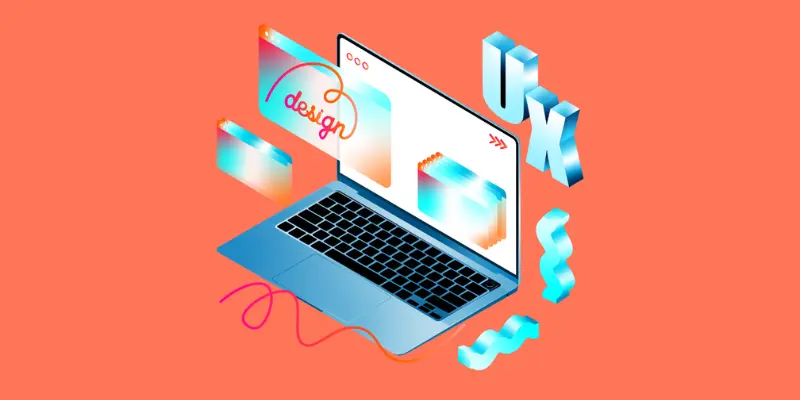
In the digital era, first impressions mean everything and a well-crafted user interface (UI) significantly impacts how users perceive an application. Motion design is one of the most transformative tools for elevating user experience (UX)—the art of adding dynamic elements through animation. When executed thoughtfully, UX motion design can enhance usability, guide users intuitively, provide essential feedback, and make digital experiences engaging. Advanced Graphic Design Courses in Bangalore often cover motion design, where students gain insight into these powerful techniques. This blog will explore how designers can incorporate motion design in UX to create captivating, user-friendly interfaces beyond static interactions.
The Role of Motion Design in UX
Motion design in UX serves various purposes, from improving functionality to creating a visually pleasing experience. Users interacting with a UI expect responses, such as feedback on a button click or swipe. UX in motion enables these responses, providing a sense of responsiveness that makes interactions feel fluid and engaging. For instance, simple animations like loading spinners or hover effects on buttons can create a sense of continuity and guide the user’s journey seamlessly. A skilled UX motion designer ensures that each animated element aligns with the design’s functional and aesthetic goals, enhancing the user’s experience as they interact with the application. Mastering these techniques is often a core part of comprehensive training programs, such as Graphic Design Courses in Marathahalli.
Beyond feedback, motion can guide users through more complex actions. For example, in e-commerce applications, animations can visually represent the progression from browsing items to making a purchase. This visual assistance minimizes cognitive load, clarifies each process step, and makes the app more intuitive. By incorporating motion design UX, designers ensure that users understand the app’s flow and features, even when navigating it for the first time.
Practical Applications of Motion Design in UI/UX
User Onboarding
One of the most effective uses of motion design is in onboarding experiences. For first-time users, UX motion design offers guidance, ensuring they understand the app’s functionality. Animated tutorials can briefly highlight core actions, like navigating the main menu or accessing key features, helping users feel comfortable and confident. Well-executed onboarding animations reduce drop-off rates by eliminating confusion, resulting in higher retention rates and a more enjoyable first impression. Programs like those offered by the Best Training Institute in Bangalore often cover this in their curriculum, providing learners with real-world applications and best practices.
Feedback and Notifications
Motion design can greatly improve users’ feedback during interactions. Motion-based feedback confirms the action’s success when a user acts, such as submitting a form or adding items to a cart. Simple animations, like a checkmark appearing after a successful form submission or a colour shift in a button, provide users instant confirmation. Such feedback, integral to motion design in UX, reassures users, making them feel in control and helping to eliminate ambiguity or frustration.
Page Transitions and Micro-interactions
Transitions between screens or sections are crucial for creating a fluid and cohesive user journey. Using UX in motion techniques, designers can introduce smooth transitions and micro-interactions, such as button clicks, swipes, and hover effects. For example, a fade-in transition when a new page loads enhances flow and brings a polished feel to the UI. Micro-interactions also make user engagement rewarding, transforming mundane actions into enjoyable moments. These interactions help bridge the gap between static and dynamic experiences, resulting in an immersive interface.
Data Visualization and Feedback Loops
Motion design in data visualization can significantly enhance the clarity and appeal of data-driven interfaces. UX motion designers can use animations to make bar charts rise gradually, pie charts rotate, or lines on graphs move in sync with live data. These visualizations help users interpret complex data more easily while adding an element of engagement. Additionally, animations like loading indicators or error notifications ensure users know the system is processing their input or guiding them if an issue arises. Comprehensive UI UX Design Courses in Bangalore can provide the skills necessary to implement these animations thoughtfully, ensuring each visual cue adds value to the overall user experience.
Enhanced Brand Storytelling and User Retention
Motion design can also help communicate a brand’s personality by integrating animation into branding elements, from logo animations to interactive product showcases. Consistent and meaningful use of motion design UX allows brands to distinguish themselves, creating a memorable experience that increases user retention. Motion design’s storytelling aspect allows brands to engage users with a personality-filled digital experience, leaving a lasting impact.
Best Practices for Effective Motion Design in UX
When adding motion design to enhance UX, focus on functionality and user engagement while keeping a few key practices in mind:
- Maintain Subtlety and Balance: Overuse of animations can be overwhelming and slow down the application. Aim to enhance the experience, not detract from it.
- Prioritize Speed and Responsiveness: Ensure animations are swift and perform well across devices. Poorly optimized motion can detract from the user experience.
- Reflect Brand Personality: Align animations with the brand’s tone—playful, sophisticated, or professional, to maintain a cohesive design.
- Optimize for Accessibility: Not all users are comfortable with motion, particularly those sensitive to movement. Including an option to reduce or turn off animations enhances accessibility.
Incorporating motion design into UI/UX transforms a static interface into a vibrant, interactive experience. From onboarding to micro-interactions and data visualizations, UX motion design provides depth, guidance, and a seamless user journey. Exploring animation and UX-focused training through programs like UI UX Design Course in Marathahalli can prove valuable for anyone interested in taking their skills further. With motion design UX, designers can create interfaces that look polished, feel intuitive, and provide a rich, engaging experience.
